‘Due to Covid-19’: Those three words – written, scribbled, and typed a million times over in the past three weeks – have come to symbolise a stunning shift in the way we experience the public realm during this pandemic. As the standard introduction to shopfront notice signs across the English-speaking world, they are also an essential system for organising new social cues and protocols to deal with the current crisis.
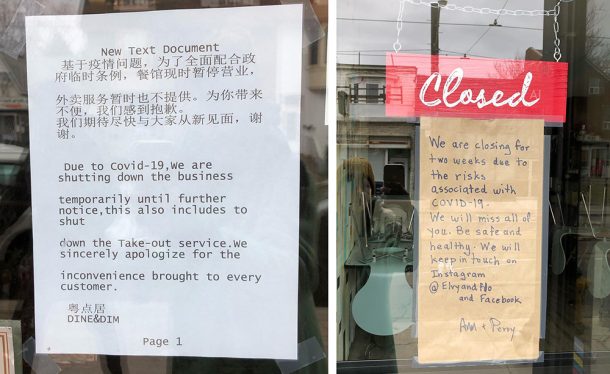
The rise and proliferation of these home-made signs has been one of the most immediate and visible changes to public space during the lockdown. Navigating London over the first few days, I felt a strange closeness to these signs, a gentle guide – the language is almost always polite – for how to act and behave in the rapidly shifting scenario – as if carefully following orders from an unknown messenger. While the language used is mostly prosaic, perfunctory statements like ‘we are closed’, ‘no cash’, ‘only two in the shop at a time’, ‘we now do takeaway’, you can often pick out strange, humorous and touching personal affects, for instance typos, the individual handwriting, and the extremely local references.
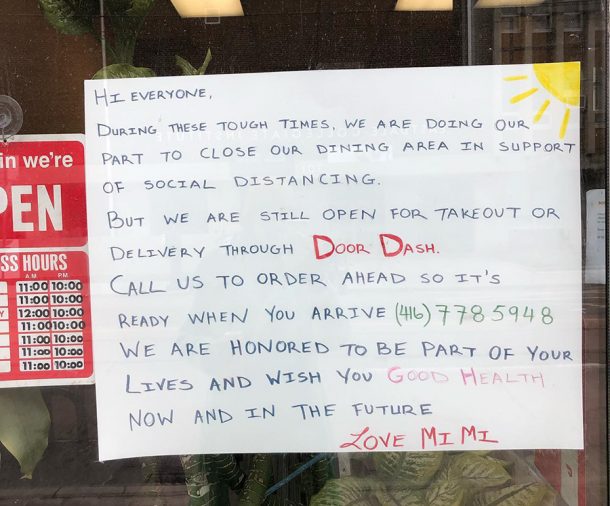
These signs have since expanded to encompass a lot more than just instruction. Children have taken to drawing rainbows and other positive messages and posting them in front windows. Artists have produced downloadable pieces for people to print and share. Chalk and spray paint have been used communicate messages of both hope and criticism, and in some cases billboards have been re-appropriated.
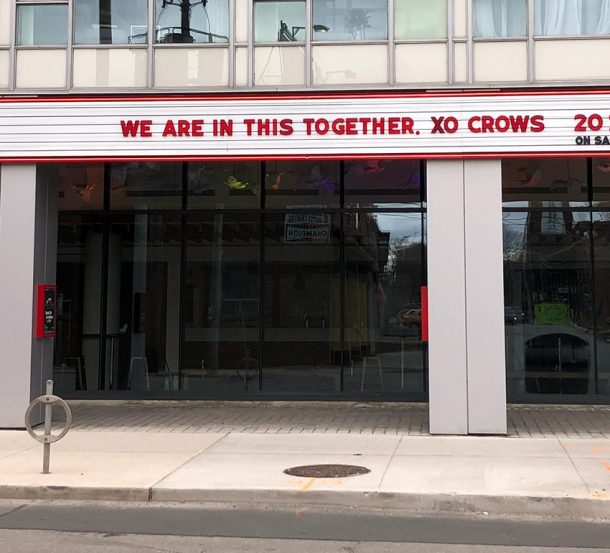
The fact that many of these are produced by hand (with relatively old-school technologies like crayon, marker, chalk, and spray paint) also speaks to the curious demise of the at-home-printer: once seen as an essential appliance – much to the ink cartridge vendor’s delight – it’s become largely irrelevant with the widespread adoption of mobile screen technology. When France issued a standard form in March which everyone was supposed to print and fill out before leaving the house, it led many to having to painstakingly write out the entire form by hand, because of a lack of said printer.
The emergence of these homemade signs tells us a lot about a layer of the city that we don’t talk much about anymore. For lack of a better term, let’s called it the editorial layer – all the words and messages broadcast to us out on the street and in public spaces, from shop signage, to parking rules, to bus shelter advertisements. This layer helps determine the character of a city and tells us a lot about power – who has the right to broadcast their messages and who doesn’t. The power dynamics wrapped up in the regulation of these rights used to be a much fiercer debate. Back in the early 2000s for instance, spurred on by publications like Adbusters and Naomi Klein’s No Logo (1999), a significant amount of critique emerged about the loss of a democratic voice in public space. I was briefly involved in one such campaign in Toronto when the municipal government attempted to ban public postering, specifically on the city’s ubiquitous utility poles. This humble infrastructure had long served as the main platform on which local bands advertised shows, services were offered, and the general community had a voice in public space. The fight to retain this space as a democratic editorial layer helped to galvanise a community of urban activists, and also led to a successful local magazine, Spacing, where I received some of my first writing commissions.
But then something funny happened. The debate faded into the background. Internet forums and the rise of social media in the latter half of the 2000s largely replaced the more direct need for community postering. A parallel world of online communicating meant the editorial layer of the city could be re-formatted, cleaned up, and regulated. The number of individual messages you could read on the street dwindled, but that was ok because there was now a world of messages to be consumed on your phone.
The re-emergence of homemade signs, while imbued with the sadness and tragedy of this current crisis, has also sparked within me a tinge of excitement – a reminder that cities and public spaces can and should be physical expressions of the communities that inhabit them. And that simple tools – a pad of paper, some tape, and a writing utensil – are all you need to achieve that.
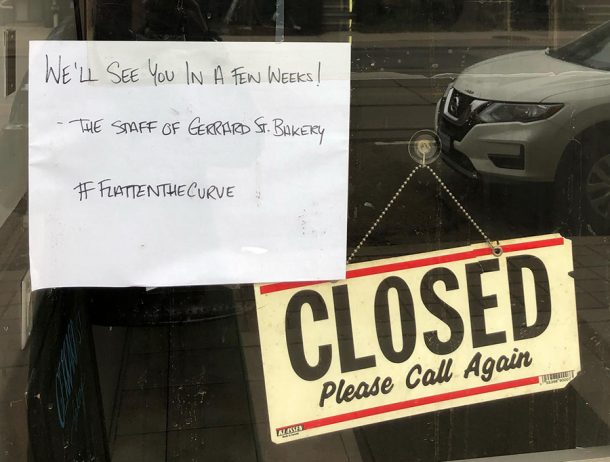
This article was originally written on 20 April 2020
Further reading
- Due to Covid-19: Documenting the Signs of the Pandemic, Andrew Louis, 2020 – ongoing
- Covid-19: signs of hope on Edinburgh’s streets – in pictures, Murdo MacLeod, The Guardian, 1 April 2020
- Dear Customers: These Are the Emotional Store Signs of a Closed New York, Antonio De Luca, New York Times, 4 April 2020
- Anti-postering By-Law Not So Anti Anymore, Matthew Blackett, Spacing, 2 March 2006
Related objects from the collections
Print, ‘Don’t Talk Down to Me’, by Jenny Holzer
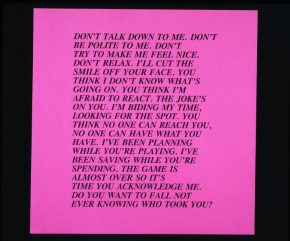
Jenny Holzer’s artistic practice is built around the construction of sharp and witty editorial statements and aphorisms delivered through various media commonly used for public display, such as neon and LED signs. Her earlier work involved the much more affordable medium of printed paper – such as this piece of offset lithography – which she would bill-post in public spaces such as around Times Square in New York City.
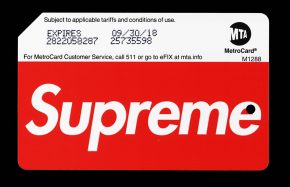
Over the past few years, the skateboard apparel brand Supreme has pushed the limits of its simple oblique type-set logo – applying it to everyday common objects such as bricks and crowbars and thereby immediately elevating the value of said object. Part of the brands success has been the pervasiveness of the logo in the form of stickers – a staple of skate culture – which can be seen in the public realm haphazardly slapped onto utility boxes, buildings and pavement. Searching out new avenues and media on which the logo might appear, in 2017 Supreme collaborated with New York’s Metropolitan Transit Authority to print their logo on a limited set of MetroCards, which people typically use to access and ride public transit.
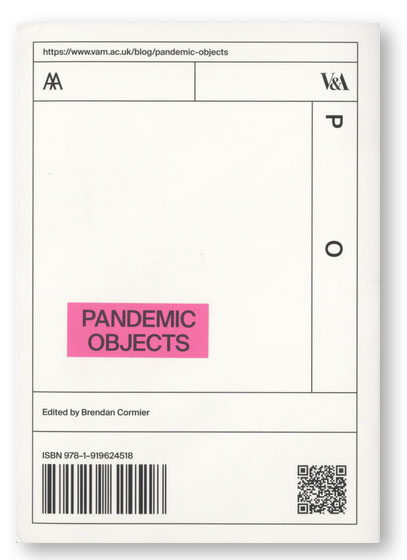



Thanks Brendan – that’s a thoughtful reminder of how communication methods in the public arena can and should change in various ways during such a crisis. I’ve certainly noticed which businesses in my neighbourhood posted more personal messages to show they care about us as customers. And it’s great that artists and designers can use digital platforms to help us be creative in low-tech ways in connecting more meaningfully with others in the community.